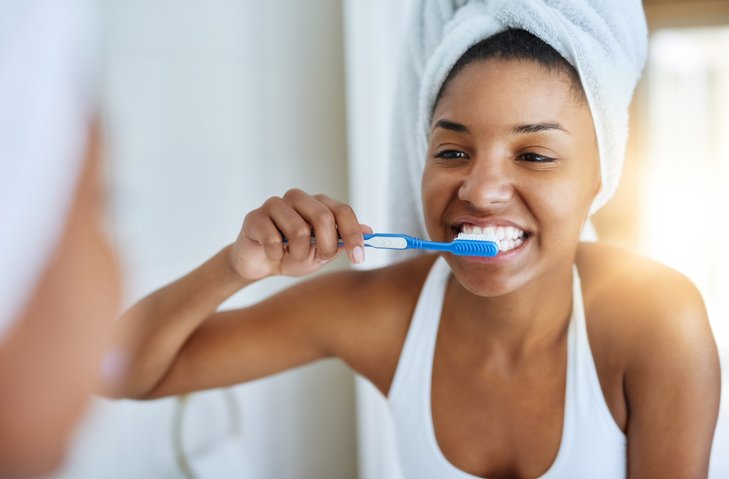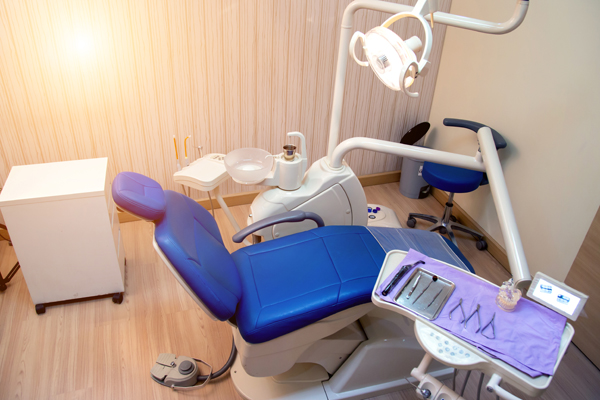Teeth Cleaning: At Home and At The Dentist

If you want to have good oral hygiene, then you need to prioritize your teeth cleaning.Both your at-home teeth cleaning practices and your professional cleanings make a difference. Find out how to make the most of your cleanings, and what you should expect.
Tips for At-Home Teeth Cleaning
There are several ways that you can keep your teeth clean at home. Here are a few tips:
1. Brush Regularly
You should brush your teeth at least two times a day. However, some people still ignore this advice. Failing to brush regularly means that plaque can build up and lead to tooth decay.If you can’t manage to brush your teeth twice a day, then at least try to brush them at night. While you’re sleeping, plaque stays put in your mouth. It’s important to remove it before you go to bed, or it will accumulate.
2. Use a Good Brushing Technique
Brushing your teeth isn’t as easy as you might think. In fact, many people do a poor job of it. You should brush gently. If you brush too hard, then you could damage your teeth. Soft brushing in a circular motion is the best way to
remove plaque.When you brush, be sure to cover all of your teeth. You should also be sure to brush your tongue. Failing to brush your tongue can cause oral health issues.
3. Consider Natural Products
There are many great natural products for your teeth cleaning needs. For example, baking soda is an excellent cleaning agent. You can find many kinds of toothpaste that contain baking soda.Another common natural dental product is fluoride. Rather, fluoride isn’t a product so much as it is an element. You can find natural fluoride in tap water. If you drink tap water, then the fluoride can help strengthen your teeth. Still, you should consider using a toothpaste that contains fluoride. Fluoride prevents tooth decay, so the more you get, the oral healthier your teeth.
4. Use Mouthwash
Mouthwash is an essential part of your at-home teeth cleaning. When you use mouthwash, the liquid works by reducing the acid in your mouth. It also gets to some areas of your mouth that you can’t reach with a toothbrush. As an added benefit, it remineralizes your teeth.Using mouthwash is simple. For this reason, you should be sure to incorporate it into your dental cleaning regiment.
5. Watch Your Eating Habits
Eating properly can make a big difference in your oral health. When you eat crunchy and fresh foods, they help to remove some of the plaque from your teeth. As you eat them throughout the day, it mimics teeth brushing.You should also limit sugary or acidic foods. When you have plaque in your mouth, the bacteria convert sugar to acid. That acid eats away at your enamel. Eventually, this can lead to tooth decay.
A Professional Teeth Cleaning
No matter how well you clean your teeth at home, you still need to have
regular professional cleanings. You should see your dentist for a teeth cleaning at least twice a year. In addition to keeping your teeth healthy, professional cleanings also allow a dentist to spot any dental problems. Sometimes, you have a dental issue but know nothing about it until a dentist examines you.The first thing that occurs during your professional cleaning is an examination. Using a mirror, the dental hygienist looks for signs of trouble. For example, he might look for signs of gum disease. Once the exam is done, he starts with the cleaning.Although brushing and flossing removes some plaque, it only can remove so much. And it cannot remove tartar. Tartar is what forms when plaque hardens. When you brush and floss, it remains there. Your dental hygienist can remove the tartar.After your tartar is gone, the hygienist can begin to brush your teeth. However, it is not a typical brush. He uses an electric brush and a gritty toothpaste. The combination of the two cleans your teeth well. If you’re tempted to try the cleaning on your own at home, then you should think again. It is easy to accidentally damage the enamel of your teeth with gritty toothpaste and a high-powered brush. Only a professional should handle this type of cleaning.
The Final Steps
One of the final steps of your professional teeth cleaning is an expert flossing. When your hygienist flosses your teeth, he can get into all of the cracks between your teeth. Doing so removes any leftover plaque. Then, he rinses out your mouth.Usually, the final step is a fluoride treatment. The hygienist places a mouthpiece that contains fluoride gel over your teeth. After that sits for one minute, the hygienist removes the mouthpiece. Then, he paints on a fluoride varnish.In some situations, the hygienist or a dentist might do some other work. Everyone has a different teeth cleaning experience. However, everyone has the same results – oral healthier teeth.
 If you want to have good oral hygiene, then you need to prioritize your teeth cleaning.Both your at-home teeth cleaning practices and your professional cleanings make a difference. Find out how to make the most of your cleanings, and what you should expect.
If you want to have good oral hygiene, then you need to prioritize your teeth cleaning.Both your at-home teeth cleaning practices and your professional cleanings make a difference. Find out how to make the most of your cleanings, and what you should expect.
